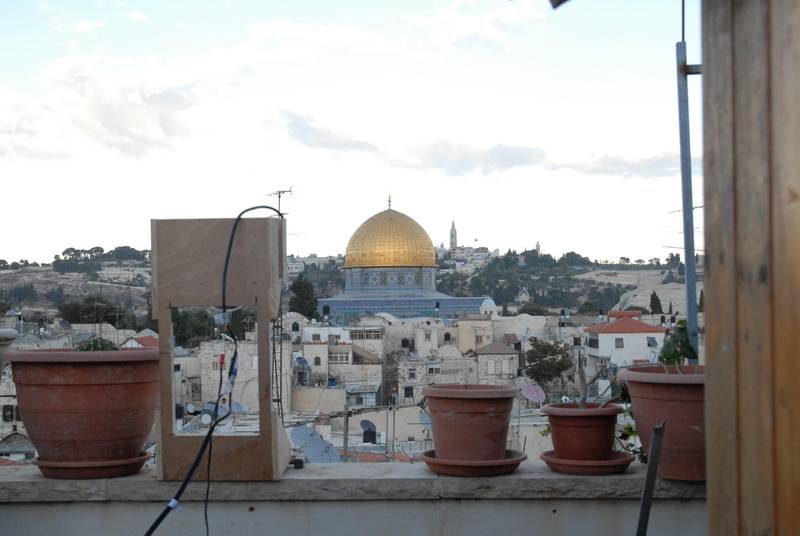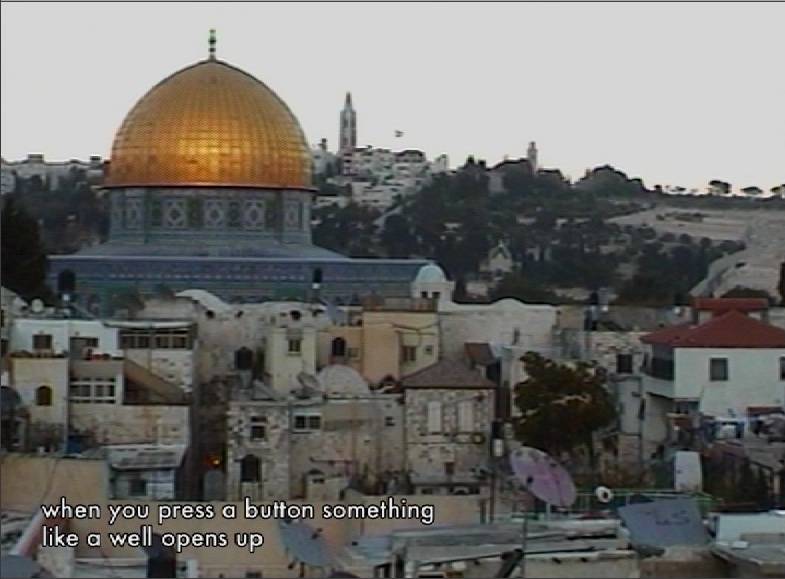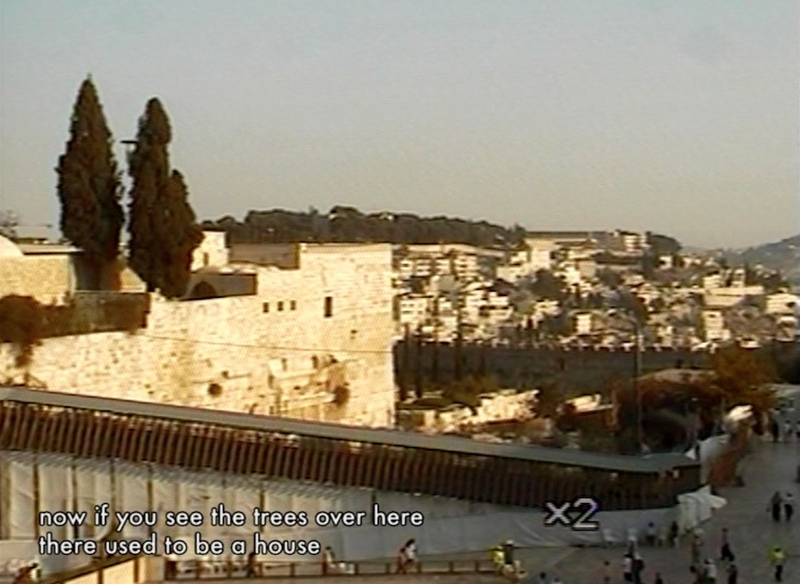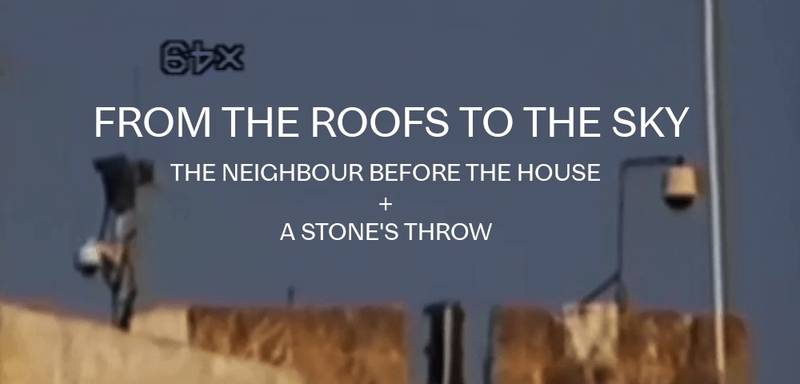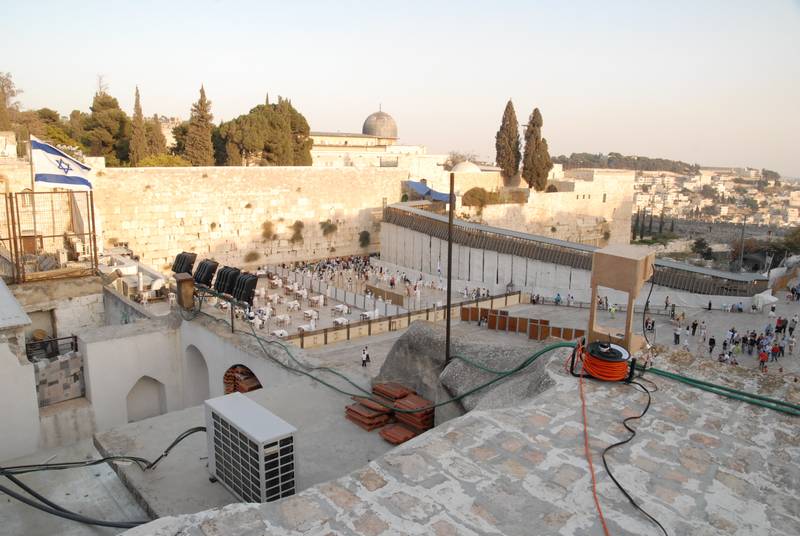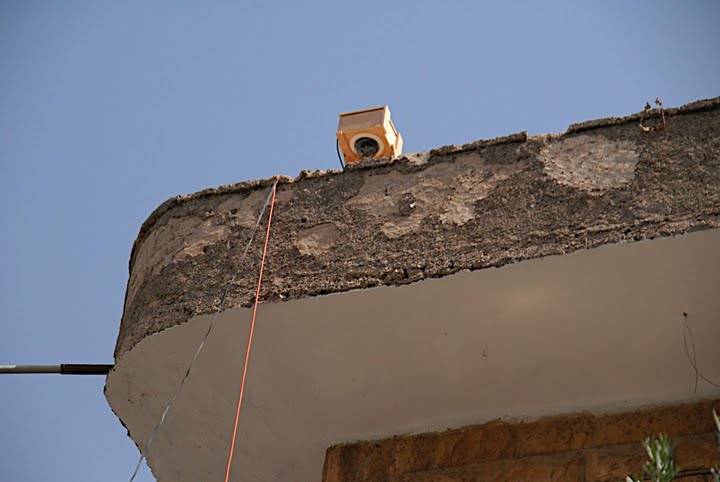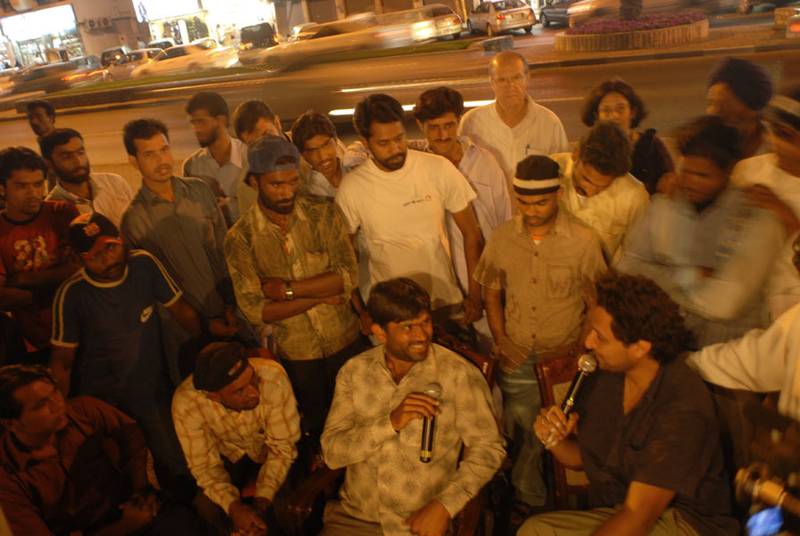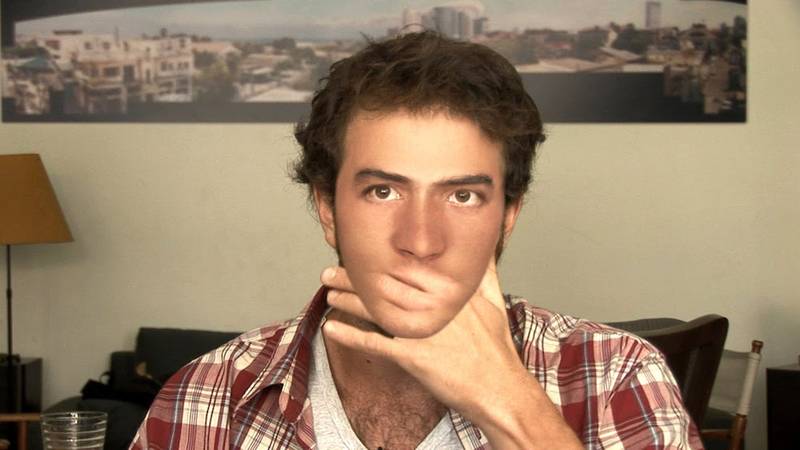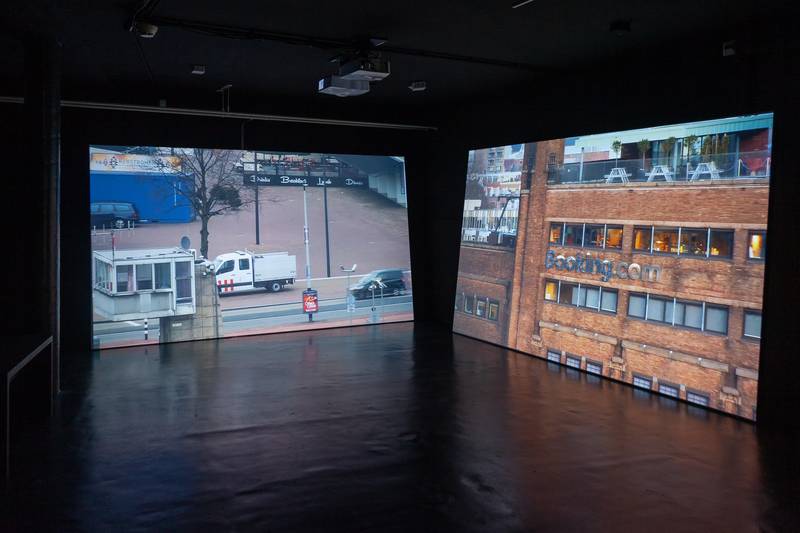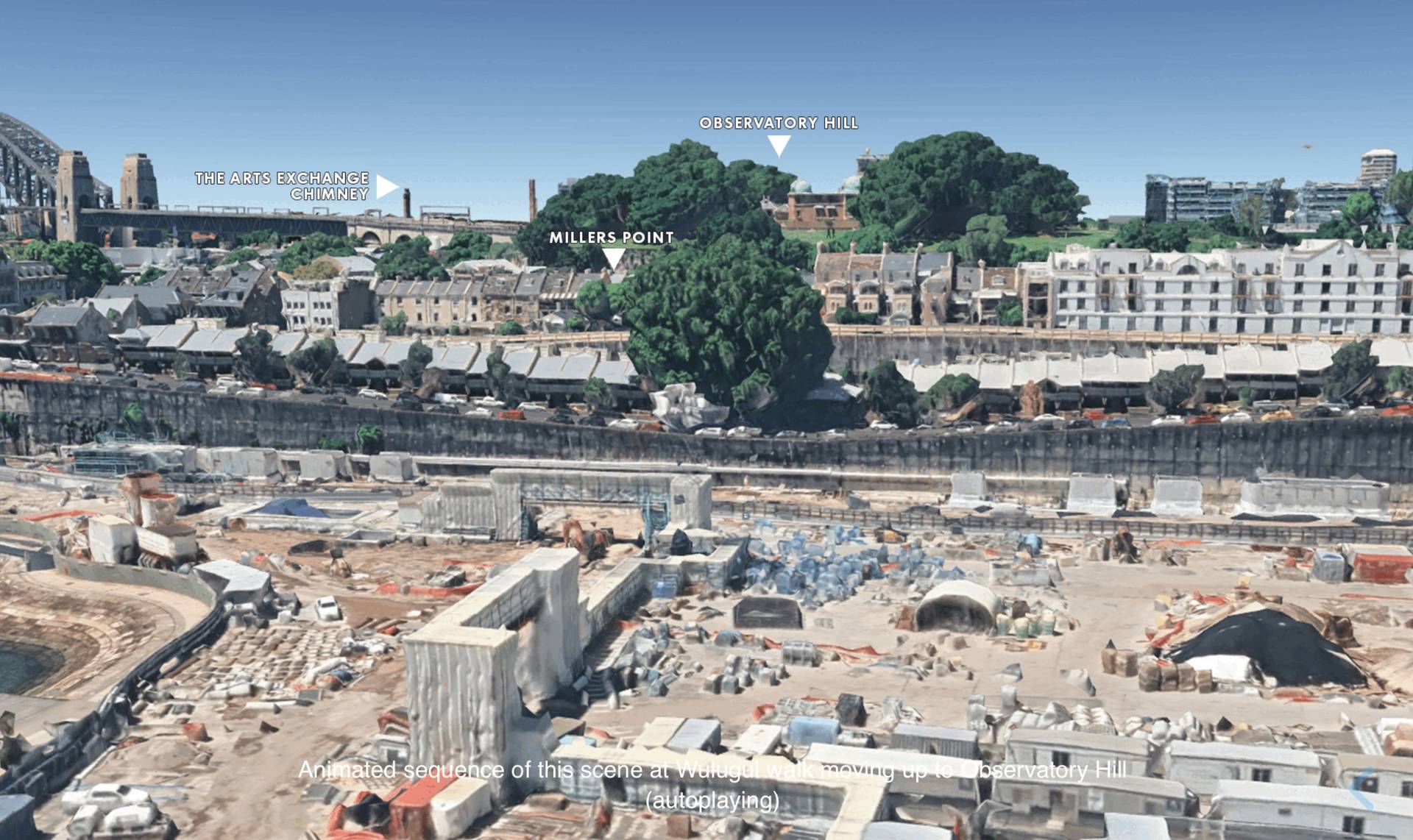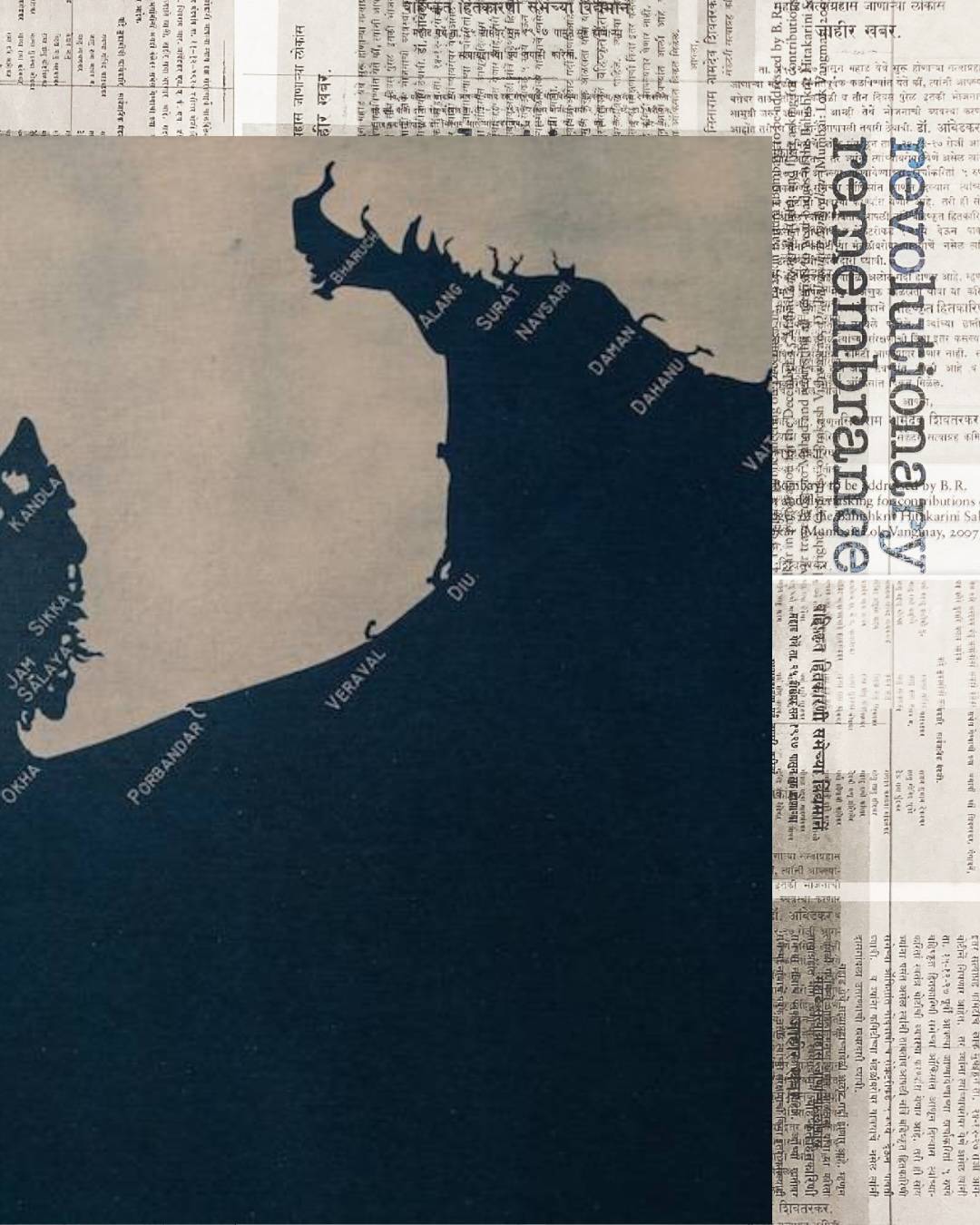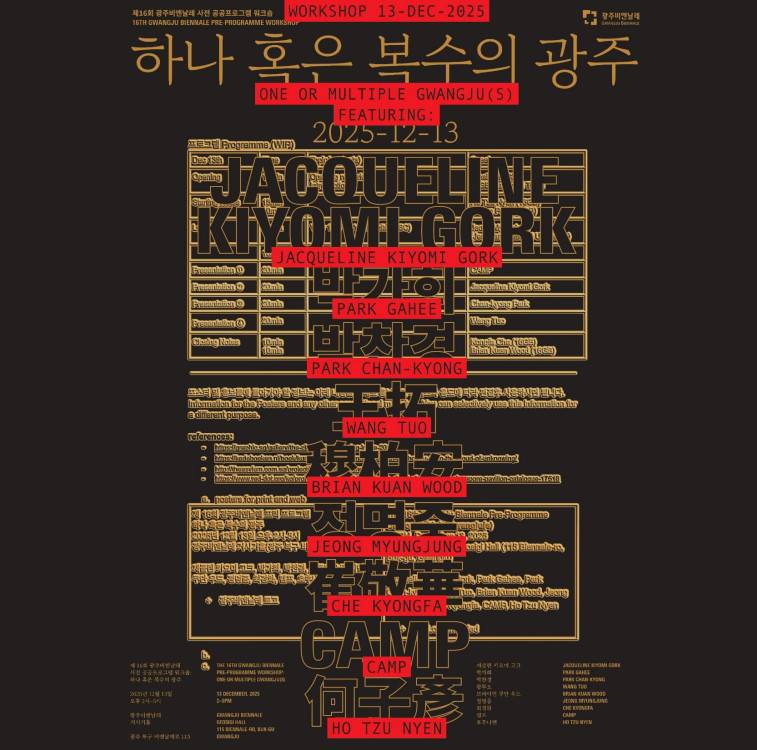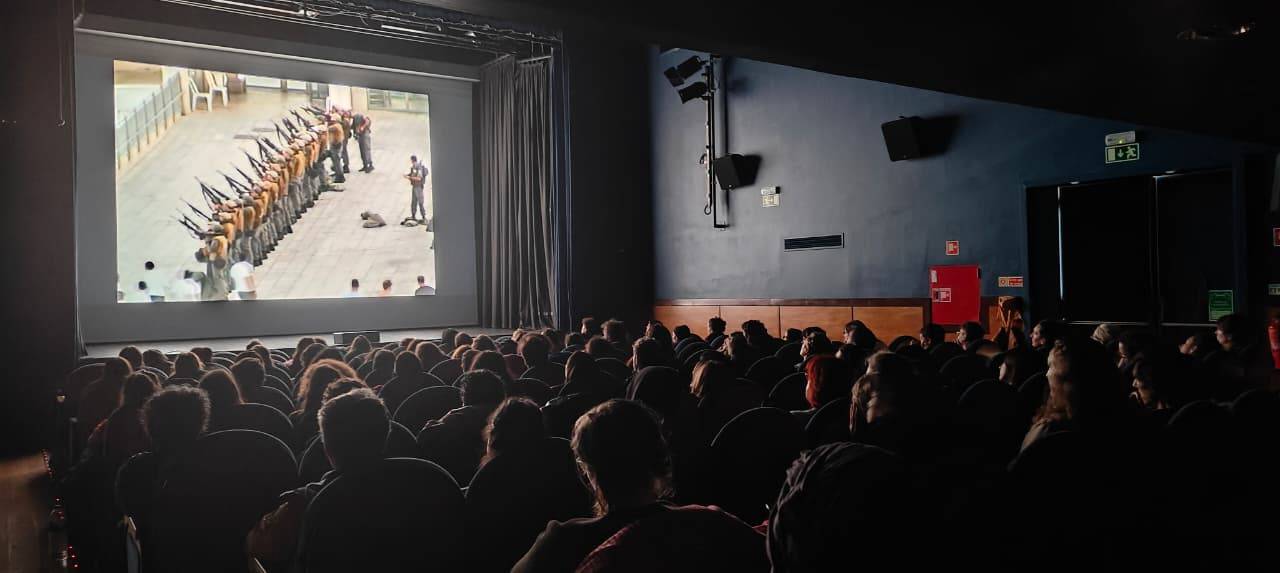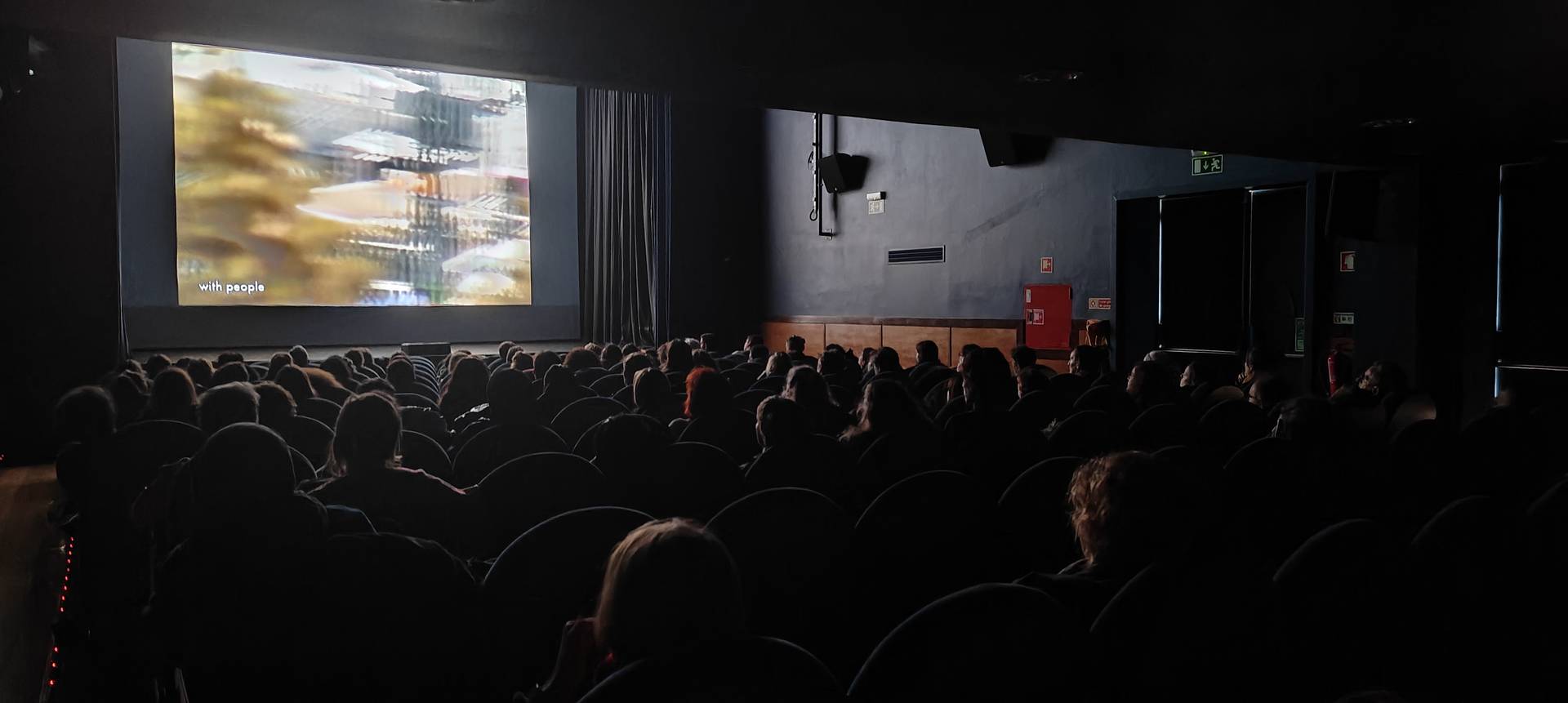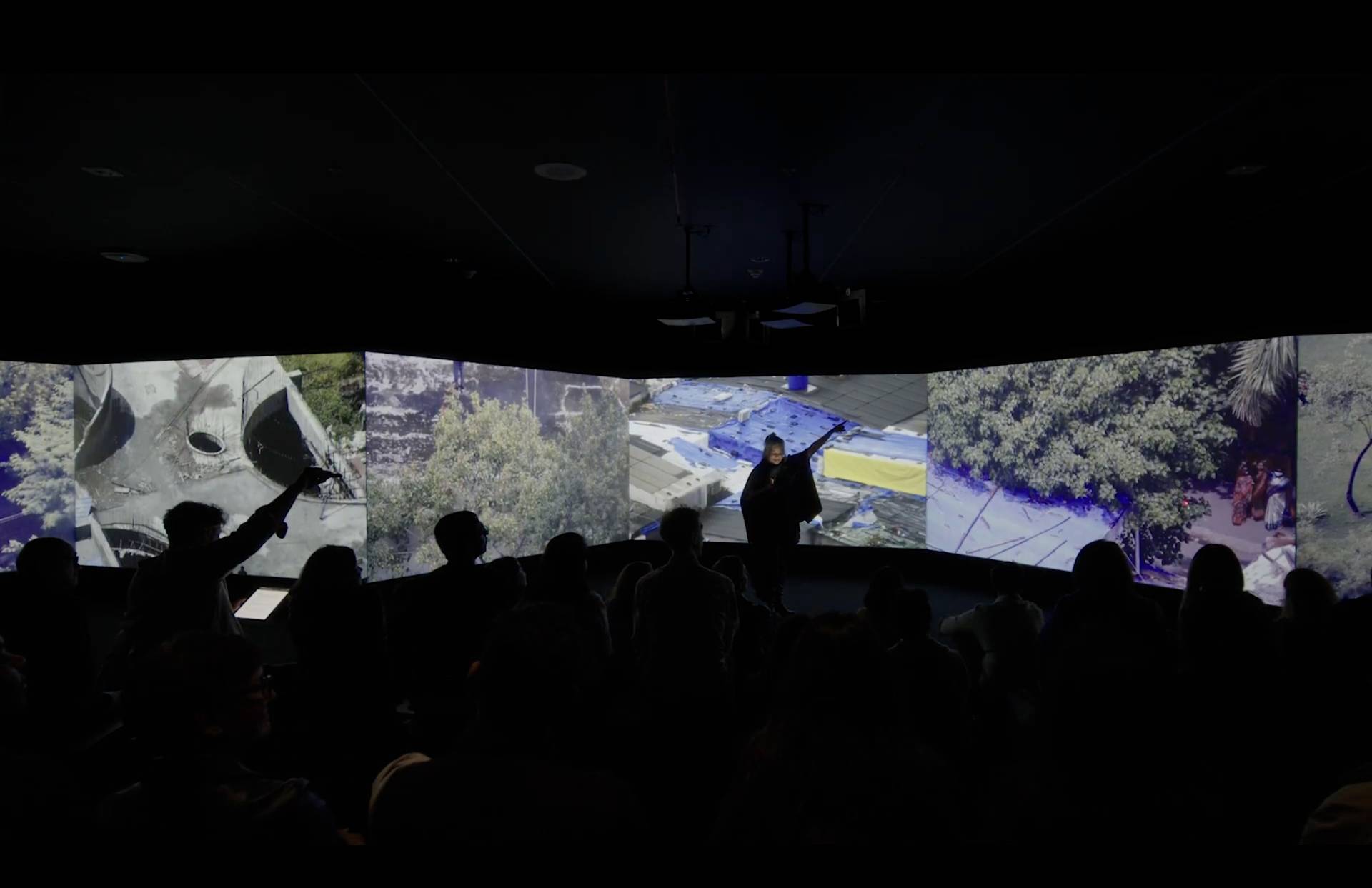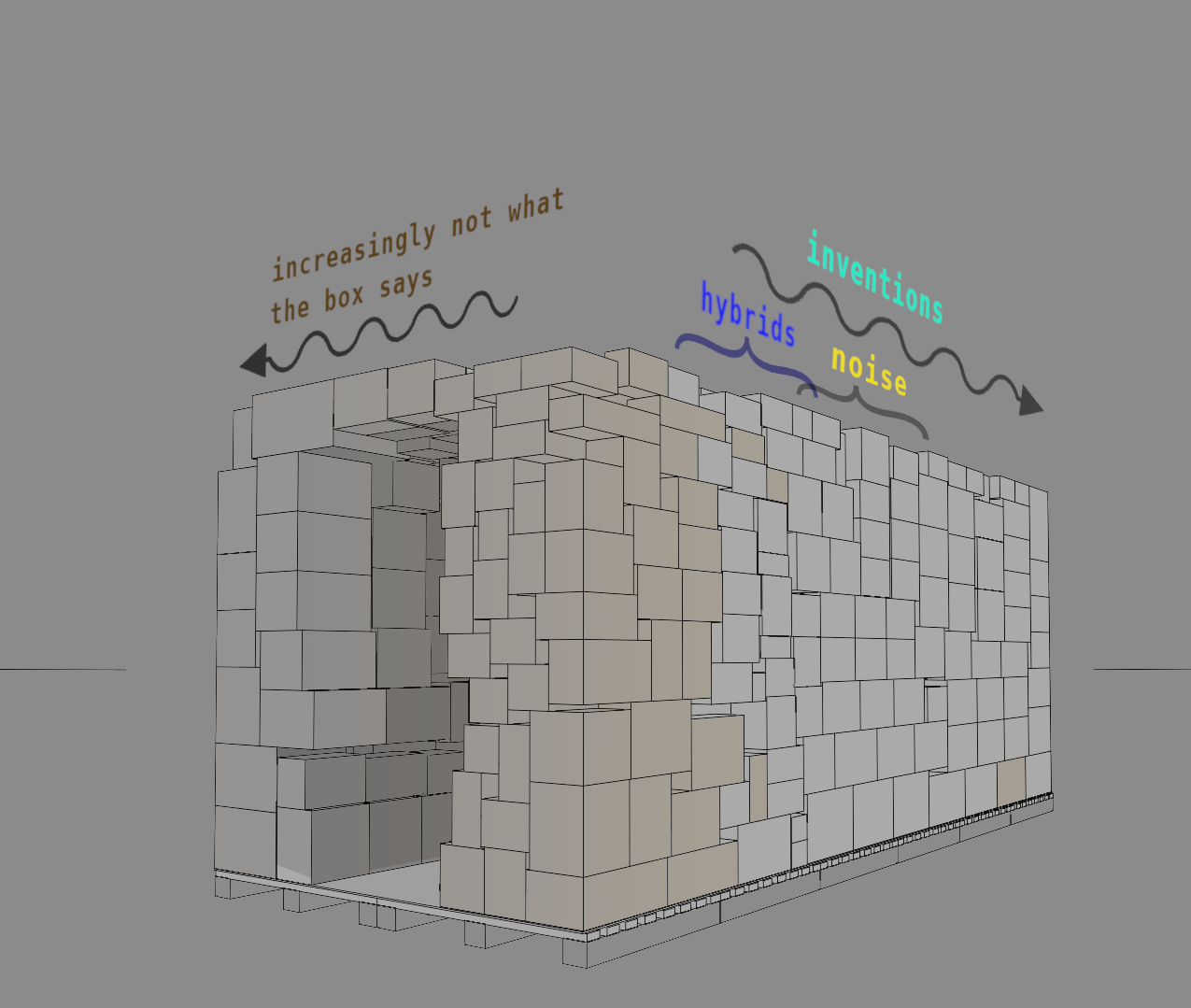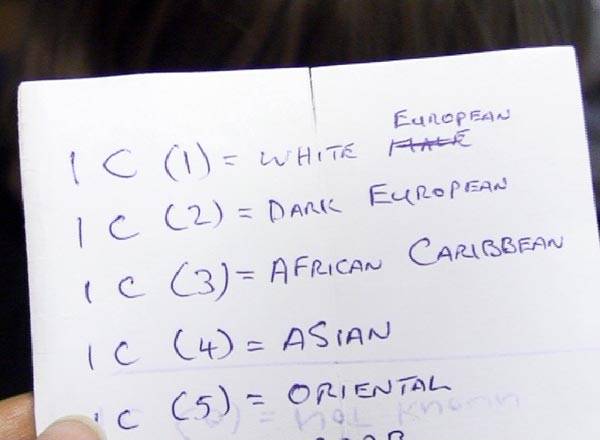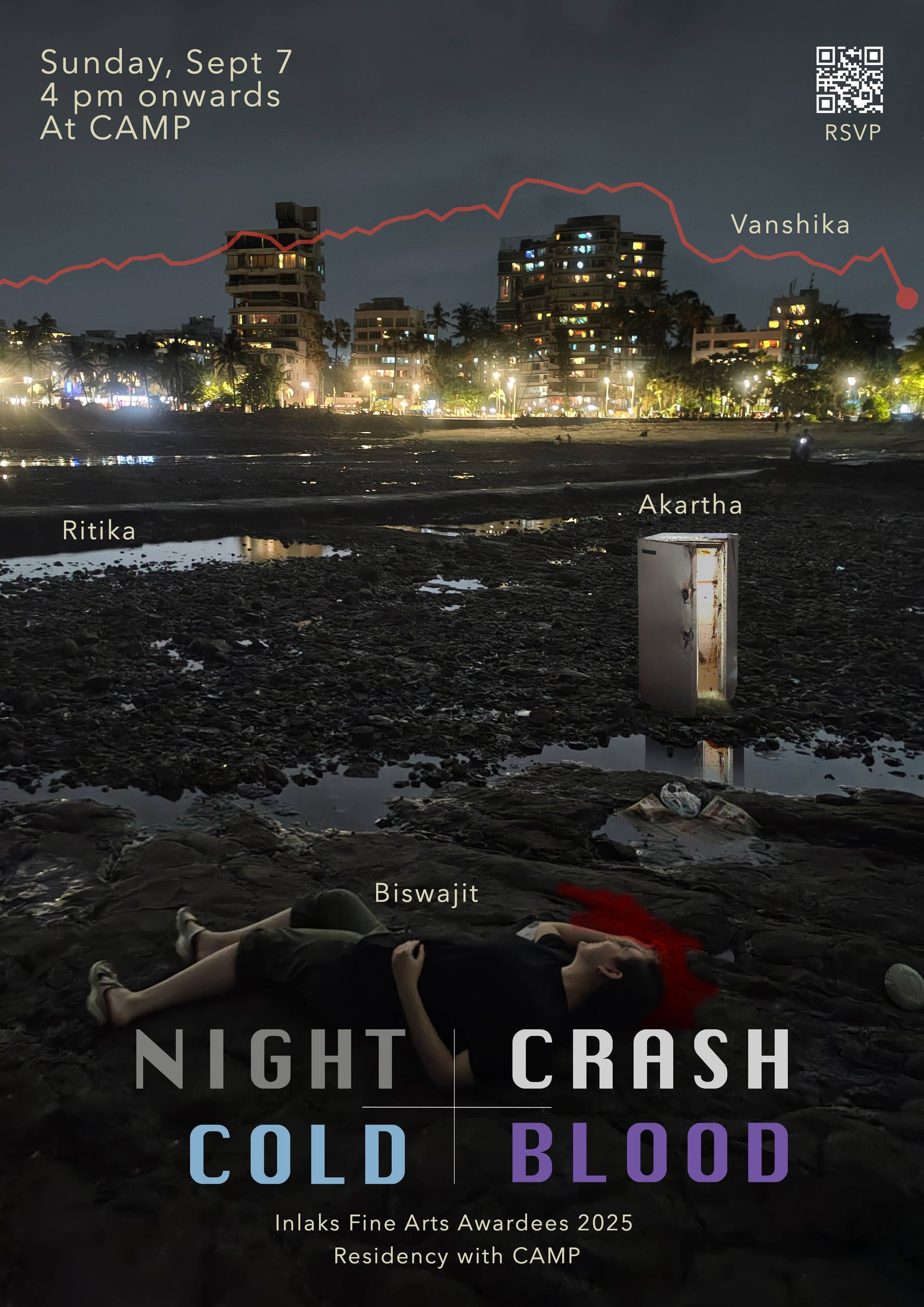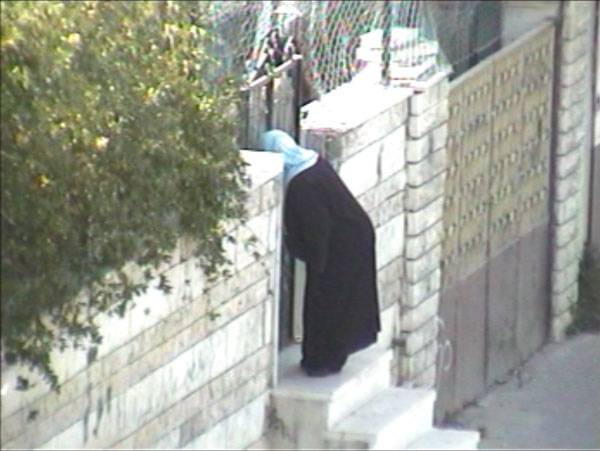
Al Jaar Qabla al Daar at Sharjah Biennial 10
March 12, 2011 - May 7, 2011
A 72-minute film resulting from a CCTV video project shot in Jerusalem/ Al Quds with eight palestinian families, from and around their homes. Screenings are every 90 minutes starting 10 am, the last screening is at 8 pm. At Bait Al Serkal, Upto May 7, 2011.
A note in the catalogue, by Florian Schneider:
CAMP
Al Jaar Qabla al Daar
(The Neighbour before the House)
Jerusalem, 2009
When the Israeli government demolished the
Moroccan Quarter in 1967, it was the fifth and smallest of old
Jerusalem's neighbourhoods. Private property was converted into public
space: the former Moroccan Quarter is now a large open plaza leading up
to the Western Wall, in use as an open-air synagogue.
At first glance, the idea of a neighbourhood appears as the most
obvious contradiction to the series of displacements, deferrals,
distortions and fault lines existing on the surface of this highly
volatile, contested and segmented city.
Neighbours are supposed to know each other. The neighbourhood is
that part of the otherwise anonymous cityscape, where one is recognised,
or where the subject is hailed. Neighbours can encounter each other
without technical mediation; they meet and greet face to face,
everything is within walking distance. Such a more or less homogenous
local environment is ruled by specific circumstances that are
characterised precisely by the fact that they are not globally valid,
that are not exchangeable or even communicable. It is grounded in the
production of a self that claims the right to the given territory: to be
exactly and exclusively here, often as a result of ownership or
property.
But this idealised notion of a setting and the staging for the
production of ‘everyday life’ on the threshold of public and private
space, needs to be governed by an archaic rule that prevents the self
from selfishness: watch out for the neighbour and "love him or her as
yourself!" The Golden Rule of ethical reciprocity and fair play – -doing
as one would be done by – treats the neighbour as the "other", who then
becomes universal. The homogenisation of a local environment as a
‘neighbourhood’ then correlates with the moral purification of a
community, a people, or humankind.
What we can see in the video project Al Jaar Qabla al Daar, is a
neighbourhood in a state of permanent crisis. Spatial proximity does not
produce any sense of community, but does the opposite. What was private
space becomes public; what was private life becomes political.
Al Jaar Qabla Al Daar sets out to reverse engineer the
neighbourhood as a machine for self-monitoring and surveillance, one
that normally turns contingency into consistency and the visible into
the sensible. Here the neighbourhood can only be encountered through a
technological device that produces closeness and remoteness, which would
otherwise remain entirely abstract. The constant zooming in and zooming
out of the camera constitutes a rather peculiar artificiality of the
picture: operational by a factor X that multiplies the amount of
detailed information at the price of context. This is a regime of
visibility that promises to provide access to what would otherwise, and
in the true sense of the word, be inaccessible, since one would not be
allowed to go there, or know how to understand what is going on.
The results are profane and deconsecrated icons that map lost
properties as robbed and removed social relationships. And this is
everything but self-explanatory: one needs a speech that goes against
the grain of the all too obvious status quo. A speech that reads out the
secrets of dispossession and renders every property decipherable as an
appropriation; that is twisted and oblique, but nevertheless takes place
in the first person.
It is the iconic quality of the pictures, their status as
operational images, that marks the impossibility to make "a film" in the
first place. The neighbourhood is scattered and inaccessible, the
neighbour is turning out to be a monster. Going beyond the technical
misuse of surveillance technologies, the filming methods open up to new
potentials: a house becomes a support for a camera, a sort of tripod
built from stones. The petrified position of the camera only allows
movements on a fragile surface of the image. It is not possible to
change the perspective and switch from one self to another.
There is an unforeseeable and incalculable quality of the material
itself: the self-centeredness of the picture does not pretend to include
or exclude anything or anyone; it can be virtually anywhere. It opens
up a third realm that is neither subjective nor objective, a space which
may be characterised by a new, radical form of hospitality that could
allow us to escape the discourses of property, security and paranoia.

